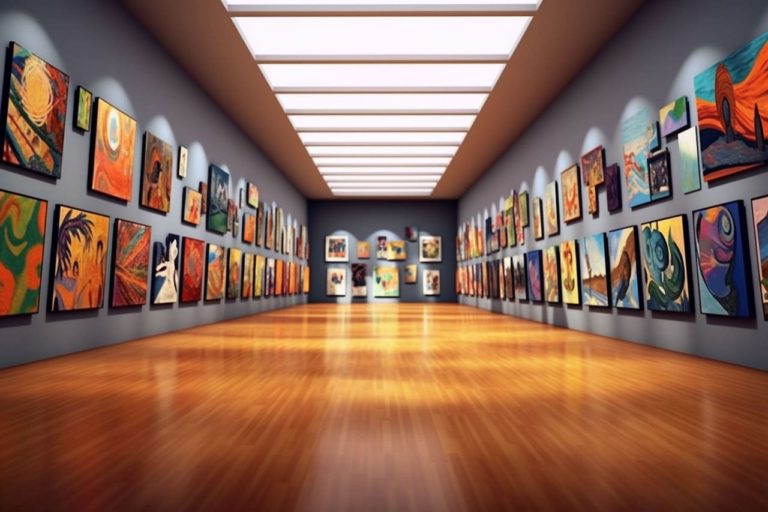Have you ever looked at a piece of abstract art and wondered, “What the heck is that supposed to be?” Well, you’re not alone. Abstract art has been a subject of confusion and controversy since its inception. But love it or hate it, there’s no denying that abstract art has had a profound impact on the art world and beyond.
So, what exactly is abstract art? At its core, abstract art is a style that emphasizes form, color, and texture over recognizable subject matter. Unlike traditional art, which seeks to depict the world around us in a realistic way, abstract art is all about creating something new and unique. It’s a style that allows the artist to break free from the constraints of reality and explore the limitless possibilities of the imagination.
But where did this style of art come from? The history of abstract art is a long and complex one, spanning over a century of artistic experimentation and innovation. To fully understand its evolution, we need to go back to the early 20th century, a time when the art world was undergoing a major upheaval.
The Birth of Abstraction
At the turn of the century, the art world was dominated by realism and impressionism. Artists were focused on capturing the world around them in a realistic way, often using vivid colors and bold brushstrokes. But for a group of artists in Europe, this style of art was no longer enough.
Led by artists such as Wassily Kandinsky and Kazimir Malevich, this group began to experiment with new forms of expression. They were fascinated by the idea of creating art that was not limited by the constraints of reality. They sought to create art that was pure, abstract, and free from any recognizable subject matter.
This new style of art was a radical departure from the traditional styles of the time. It was characterized by bold, geometric shapes, vibrant colors, and an emphasis on the process of creation rather than the finished product. The artists who embraced this style saw themselves as pioneers, breaking new ground in the world of art.
The Rise of Abstraction
Despite its radical nature, abstract art began to gain popularity in the early 20th century. It was embraced by artists and art collectors alike, who saw it as a new and exciting form of expression. In the years that followed, abstract art continued to evolve and grow, taking on new forms and styles.
One of the most influential movements in the history of abstract art was the Abstract Expressionist movement. This movement emerged in the 1940s in the United States, and was characterized by large, gestural paintings that emphasized the physical act of creation. Artists such as Jackson Pollock and Willem de Kooning became household names, and their works became some of the most iconic pieces of the 20th century.
The Legacy of Abstraction
Today, abstract art continues to be a major force in the art world. It has inspired countless artists and has had a profound impact on the way we think about art and creativity. It has also helped to break down barriers between different art forms, inspiring new forms of expression in areas such as music, dance, and film.
But abstract art is not without its critics. Some see it as a form of artistic pretension, an attempt by artists to create something that is intentionally obscure and difficult to understand. Others see it as a reflection of the cultural and social upheaval of the 20th century, a way of expressing the anxiety and uncertainty of a rapidly changing world.
Love it or hate it, there’s no denying that abstract art has had a profound impact on the art world and beyond. It has inspired new forms of creativity and has helped to break down the barriers between different art forms. Whether you see it as a celebration of imagination or a reflection of the anxieties of our times, there’s no denying the impact that abstract art has had on the world around us.
Despite its abstract nature, there are many ways to appreciate and engage with abstract art. For some, it’s all about the colors and textures of the work, while for others it’s about the emotional response that the work evokes. Whatever your perspective, abstract art is a style that has something to offer everyone.
In conclusion, the history and evolution of abstract art is a story of artistic innovation and creativity. It is a style that has pushed the boundaries of what is possible in the world of art, and has inspired countless artists and creators around the world. Whether you love it or hate it, there’s no denying the impact that abstract art has had on the world around us.
